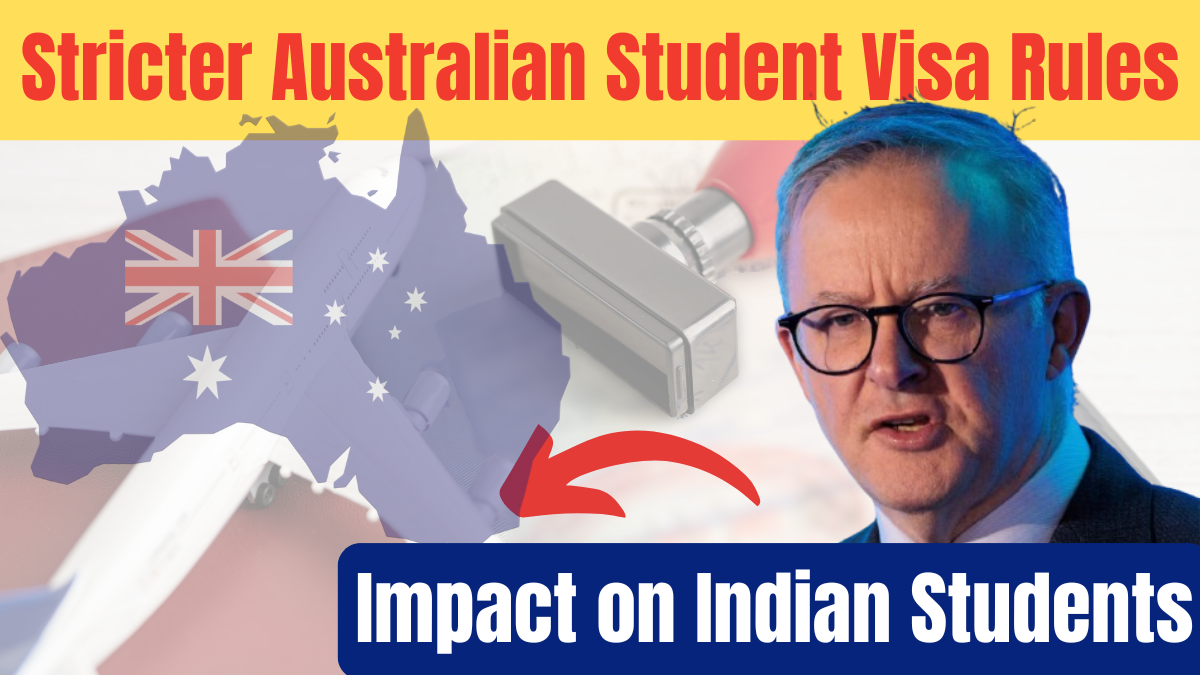Australia has recently implemented significant modifications to its student visa regulations, aiming to manage migration levels and address concerns within the education sector. Key changes include:
-
Cap on International Student Enrollments: The Australian government has announced a cap of 270,000 on international student enrollments for the year 2025. This measure is intended to control the influx of foreign students and its impact on housing and infrastructure.
-
Introduction of the Genuine Student (GS) Requirement: Replacing the previous Genuine Temporary Entrant (GTE) criterion, the GS requirement emphasizes that applicants must demonstrate a genuine intention to study in Australia. This involves rigorous assessments to ensure that the primary purpose of the visa is education.
-
Increased Financial and English Proficiency Standards: Applicants are now required to show higher financial capacity and meet elevated English language proficiency benchmarks. For instance, the International English Language Testing System (IELTS) score requirement has been raised to 6.0 for student visas and 6.5 for Temporary Graduate visas.

How Might These Changes Impact Indian Students?
India has been a significant source of international students for Australia, with approximately 118,109 Indian students enrolled in Australian institutions in 2024. The recent policy adjustments could have several implications:
-
Reduced Enrollment Opportunities: The imposed cap may limit the number of available spots for international students, increasing competition and potentially reducing the chances for Indian applicants.
-
Stricter Application Scrutiny: The GS requirement entails more thorough evaluations of visa applications, which might lead to higher refusal rates for Indian students, especially if they fail to convincingly demonstrate their genuine intent to study.
-
Financial and Language Barriers: Elevated financial proof and English proficiency standards could pose additional challenges for prospective students from India, possibly deterring those who may struggle to meet these heightened criteria.
MUST READ: Australia’s Booming Job Market 2025 – Top In-Demand Jobs & Best Visa Options
What Are the Reactions from Educational Institutions?
Australian universities and educational consultants have expressed mixed feelings regarding these policy changes:
-
Commitment to International Students: Institutions like Deakin University affirm their dedication to providing a welcoming environment for international students. They acknowledge the policy discussions but continue to see strong interest from Indian applicants.
-
Concerns Over Potential Decline: Education consultants warn that the anticipation of stricter visa policies and caps is already causing apprehension among Indian students, potentially leading them to consider alternative study destinations.
What Alternatives Are Indian Students Considering?
In light of Australia’s evolving policies, Indian students are exploring other countries for higher education:
-
United States: With a more flexible visa regime and a wide array of educational opportunities, the U.S. remains a popular choice.
-
Canada: Known for its welcoming immigration policies and quality education system, Canada continues to attract a significant number of Indian students.
-
United Kingdom: Despite recent policy changes, the UK still offers prestigious institutions and post-study work opportunities that appeal to international students.
FAQs
How will the cap on international student enrollments affect Indian applicants?
The cap is likely to increase competition for limited spots, potentially reducing the number of Indian students able to secure admission to Australian institutions.
What is the Genuine Student (GS) requirement?
The GS requirement mandates that student visa applicants demonstrate a genuine intention to study in Australia, ensuring that education is their primary purpose for the visa.
Have English language proficiency requirements changed?
Yes, the IELTS score requirement has been raised to 6.0 for student visas and 6.5 for Temporary Graduate visas, necessitating higher language proficiency from applicants.
Are there concerns about increased visa refusals?
With more rigorous assessments under the GS requirement, there is a possibility of higher visa refusal rates, especially if applicants cannot convincingly demonstrate their genuine intent to study.
How are Australian universities responding to these changes?
While universities remain committed to welcoming international students, they acknowledge that discussions about potential caps and stricter policies may impact prospective students’ decisions.
What alternative countries are Indian students considering for higher education?
Indian students are increasingly looking towards the United States, Canada, and the United Kingdom as viable alternatives for quality education and favorable visa policies.
Will the new financial requirements affect Indian students?
Yes, higher financial capacity requirements may pose challenges for some Indian students, potentially limiting those who cannot meet the increased financial thresholds.
When will these policy changes take effect?
Some changes have already been implemented, while others, like the enrollment cap, are slated for 2025. Prospective students should stay informed through official channels for the most current information.
Click here to know more.
Aanchal is a passionate writer with a keen interest in storytelling, content creation, and creative expression. She enjoys exploring diverse topics and crafting engaging narratives that captivate readers.
